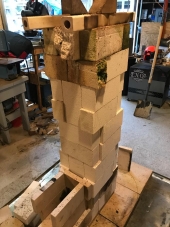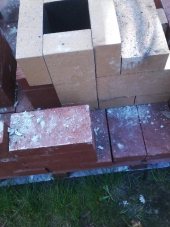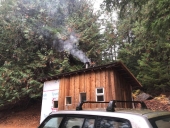I'm looking at doing something almost exactly like this. I need to make some biochar for clients out of materials like nut shells and chipped coconut husks (coir), and these don't really play very nicely in a flame cap kiln. I'm looking at mild steel plate, angle fittings for bolting together, and ceramic fibre blanket held in place with stainless steel mesh.
Your drawings look very similar to what Kobus Venter designed
here. His kiln can be used three different ways: as an open flame-cap vessel sort of like a Ring of Fire, with an inner retort surrounded by sacrificial feedstock as a TLUD, or as you're planning with a rocket combustion core exiting underneath the inner drum.
According to Kobus this works quite well. It's not a full-on rocket by permies standards without the matching cross section insulated heat riser, but because the goal is to transfer the heat into the retort to initiate pyrolysis it meets the functional requirements and I would expect it to use a lot less fuel than the TLUD for better results thanks to the high temperature generated. The chamber will act as a heat riser thanks to the insulation. The bit I'm wondering about is where the extra air will come from to fully combust all the syngas coming out of the retort...will it draw through the burn tunnel, or should we add a secondary air port at the bottom of the chamber?
Experimentation awaits. We should compare notes as we build these things.












